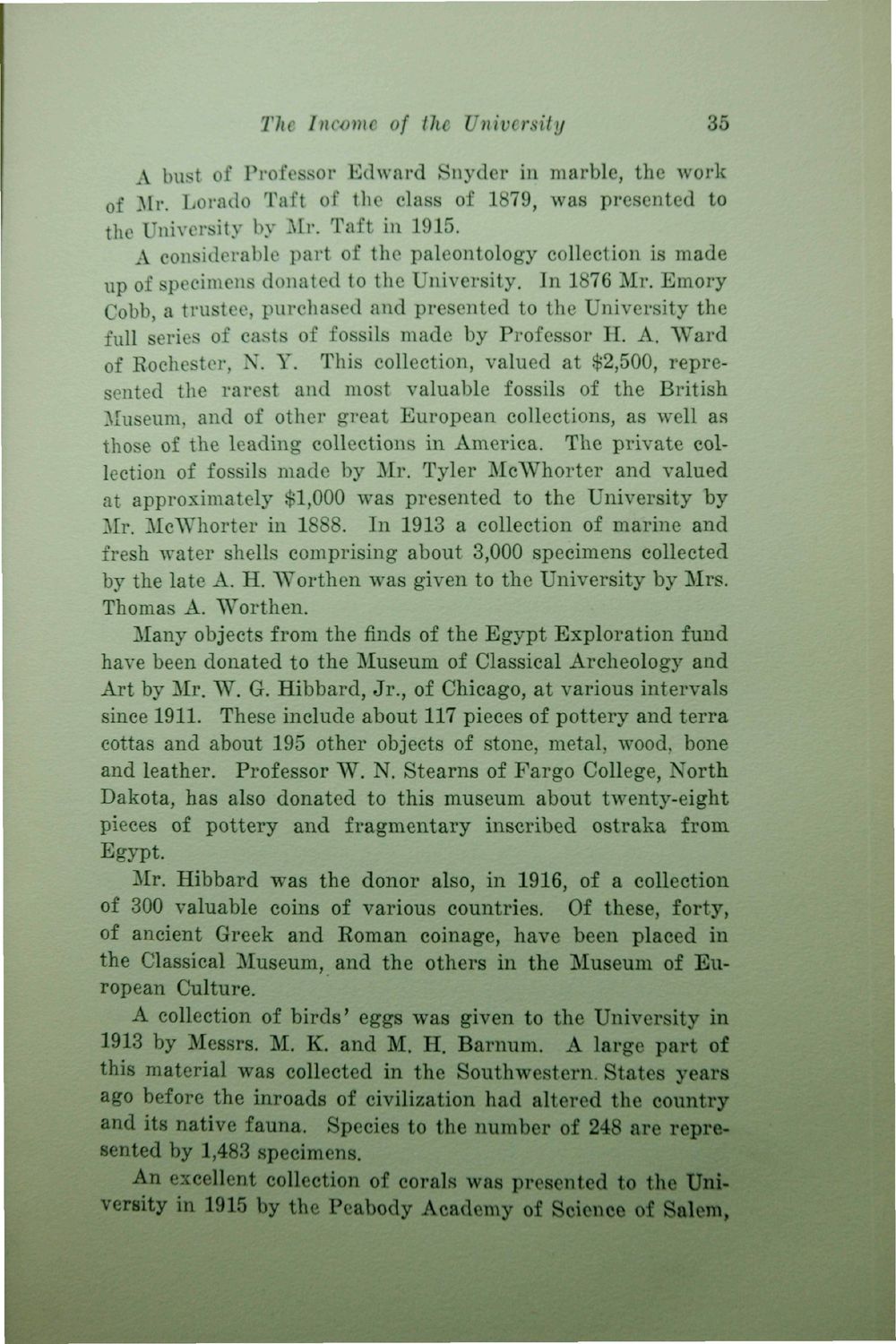| |
| |
Caption: Book - 16 Years (Edmund James)
This is a reduced-resolution page image for fast online browsing.

EXTRACTED TEXT FROM PAGE:
77to Income of the University 35 A bust of Professor Edward Snyder in marble, the work of Mr, Lorado Taft of the class of 1879, was presented to the University by Mr. Taft in 1915. A considerable part of the paleontology collection is made up of specimens donated to the University. In 1876 Mr. Emory Cobb, a trustee, purchased and presented to the University the full series of casts of fossils made by Professor H. A. Ward of Rochester, N. Y. This collection, valued at $2,500, represented the rarest and most valuable fossils of the British Museum, and of other great European collections, as well as those of the leading collections in America, The private collection of fossils made by Mr. Tyler McWhorter and valued at approximately $1,000 was presented to the University by Mr. McWhorter in 1888. In 1913 a collection of marine and fresh water shells comprising about 3,000 specimens collected by the late A. H. Worthen was given to the University by Mrs. Thomas A. Worthen. Many objects from the finds of the Egypt Exploration fund have been donated to the Museum of Classical Archeology and Art by Mr. W. G. Hibbard, Jr., of Chicago, at various intervals since 1911. These include about 117 pieces of pottery and terra eottas and about 195 other objects of stone, metal, wood, bone and leather. Professor W. N. Stearns of Fargo College, North Dakota, has also donated to this museum about twenty-eight pieces of pottery and fragmentary inscribed ostraka from Egypt. Mr. Hibbard was the donor also, in 1916, of a collection of 300 valuable coins of various countries. Of these, forty, of ancient Greek and Roman coinage, have been placed in the Classical Museum, and the others in the Museum of European Culture. A collection of birds' eggs was given to the University in 1913 by Messrs. M, K. and M. H. Barnum. A lai*ge part of this material was collected in the Southwestern. States years ago before the inroads of civilization had altered the country and its native fauna. Species to the number of 248 are represented by 1,483 specimens. An excellent collection of corals was presented to the University in 1915 by the Peabody Academy of Science of Salem,
| |